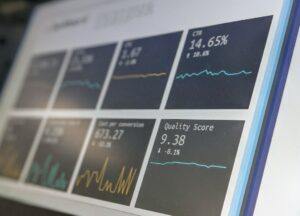The Importance of Fibonacci Ratios in Forex Harmonic Trading
When it comes to forex trading, there are various strategies and tools that traders can utilize to enhance their chances of success. One such tool that has gained popularity among traders is the Fibonacci ratios. These ratios, derived from the Fibonacci sequence, have proven to be valuable in identifying potential reversal points and predicting future price movements in the forex market. In this article, we will explore the importance of Fibonacci ratios in forex harmonic trading.
The Fibonacci sequence, named after the Italian mathematician Leonardo Fibonacci, is a series of numbers where each number is the sum of the two preceding ones. The sequence starts with 0 and 1, and the subsequent numbers are obtained by adding the two previous numbers together. The Fibonacci sequence goes like this: 0, 1, 1, 2, 3, 5, 8, 13, 21, 34, 55, and so on.
Fibonacci ratios are created by dividing one number in the sequence by the number that follows it. The most commonly used Fibonacci ratios in forex trading are 0.382, 0.50, 0.618, 1.0, 1.618, and 2.618. These ratios are believed to have significant implications in market movements and can be used to identify potential support and resistance levels.
In forex harmonic trading, traders use these Fibonacci ratios to identify harmonic patterns, which are geometric price patterns that indicate potential reversals or continuations in the market. Harmonic patterns are based on the idea that price movements in the market follow specific geometric shapes and ratios. These patterns can be seen as an interpretation of market psychology and can provide traders with high-probability trade setups.
One of the most well-known harmonic patterns is the Gartley pattern. This pattern consists of a series of Fibonacci retracements and extensions, forming specific ratios. By applying Fibonacci ratios to price swings, traders can identify potential reversal points and enter trades with favorable risk-to-reward ratios.
For example, in a bullish Gartley pattern, the first swing is a retracement from a previous uptrend, typically around the 0.618 Fibonacci ratio. The second swing is an extension of the previous retracement, often reaching the 1.272 Fibonacci ratio. The third swing is another retracement, usually around the 0.786 Fibonacci ratio. Finally, the fourth swing is an extension of the second swing, reaching the 0.786-1.272 Fibonacci ratio.
By identifying these harmonic patterns and their corresponding Fibonacci ratios, traders can enter trades with precise entry and exit levels. This helps in managing risk and maximizing potential profits. Moreover, harmonic patterns can be combined with other technical analysis tools, such as trendlines and moving averages, to further enhance trading decisions.
While Fibonacci ratios are valuable tools in forex harmonic trading, it is important to note that they should not be used in isolation. Traders should consider other factors, such as market trends, support and resistance levels, and fundamental analysis, to make informed trading decisions. It is also crucial to use proper risk management techniques, such as setting stop-loss orders and managing position sizes, to protect capital and minimize losses.
In conclusion, Fibonacci ratios play a significant role in forex harmonic trading. These ratios, derived from the Fibonacci sequence, can help traders identify potential reversal points and predict future price movements in the market. By applying these ratios to price swings, traders can identify harmonic patterns and enter trades with favorable risk-to-reward ratios. However, it is important to use Fibonacci ratios in conjunction with other technical analysis tools and employ proper risk management techniques. With a thorough understanding of Fibonacci ratios and harmonic patterns, traders can enhance their trading strategies and increase their chances of success in the forex market.






